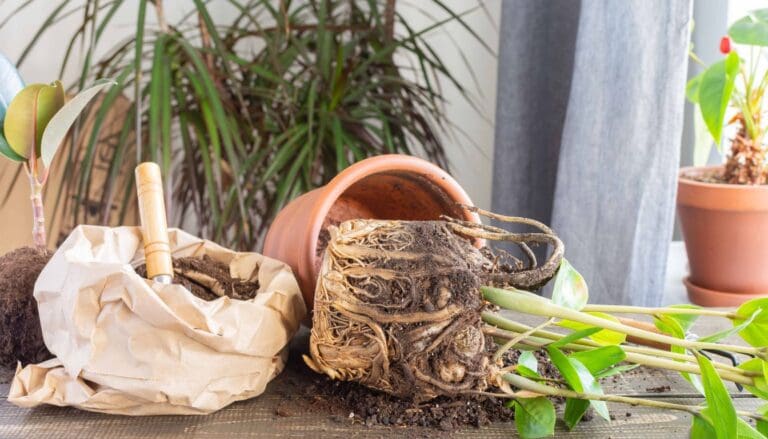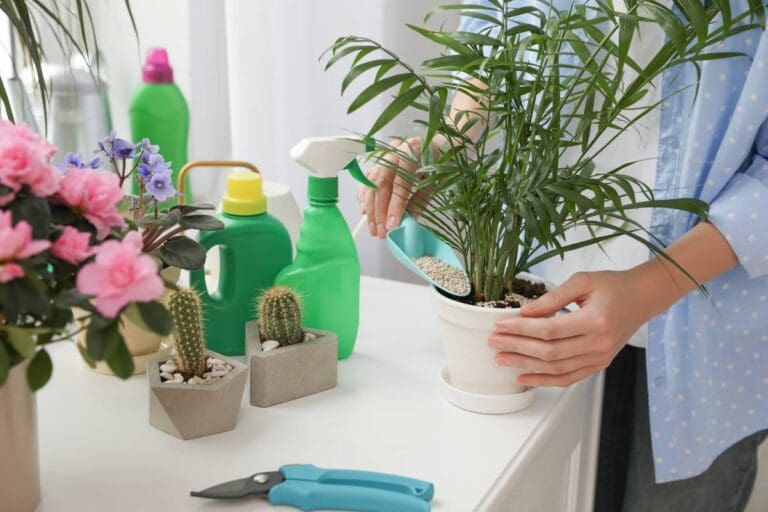50 Plants That Love Coffee Ground
I’ve learned that coffee grounds can do more than fuel my mornings—they can also boost plant growth. When used the right way, they enrich soil and help certain plants thrive indoors and out.
Knowing which plants like coffee grounds makes it easier to turn everyday waste into something useful for your garden.
Here, I’ll dig into plants that love coffee grounds, from leafy houseplants like the peace lily to colorful flowers and tough succulents.
At the end, I’ll also throw in a few tips on how to use coffee grounds in the garden and what’s worked for me when it comes to keeping plants happy.
Please note: Simplify Plants is reader-supported. As an Amazon Associate, I earn from qualifying purchases made by our readers with no extra cost added to you all! Some links in the post are affiliate links and I get a commission from purchases made through links in the post.
1) African Violet

African violets seem to perk up with small amounts of coffee grounds. These indoor plants like their soil a bit acidic, and coffee grounds help keep things in that sweet spot.
I always dry the grounds and mix them into the soil—not just toss them on top. That keeps things loose and less prone to mold.
African violets want consistent moisture but really hate soggy roots. I stick to a tiny pinch of grounds once a month, just enough for a little boost.
The nutrients in coffee grounds, especially nitrogen, seem to help the leaves look greener and healthier.
Bright, indirect light and a warm spot are also important. With a gentle touch and the right balance, my African violets stay happy and bloom more often.
2) Spider Plant
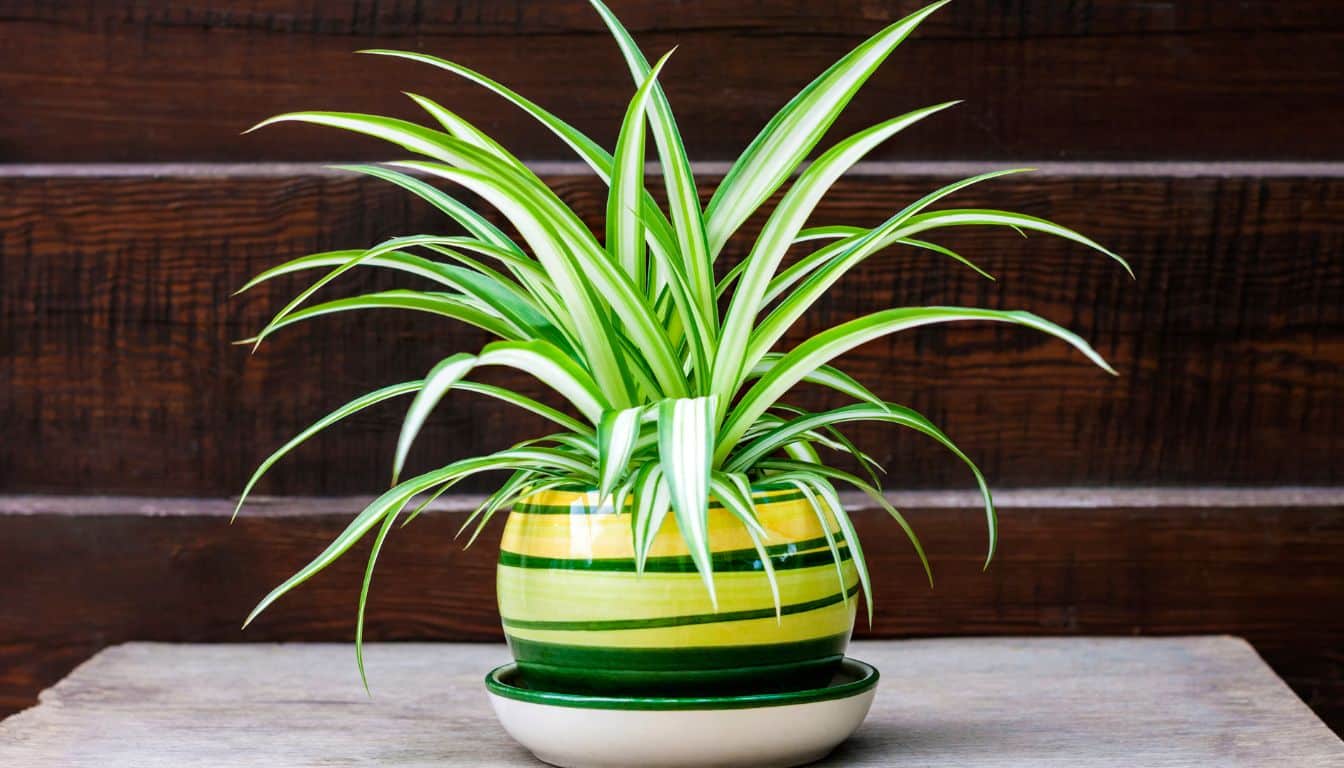
Spider Plants grow fast and don’t ask for much. They handle all sorts of light and don’t get fussy about care. Their long green-and-white leaves just brighten up any space.
I’ve noticed coffee grounds can give Spider Plants a little nudge if used sparingly. The grounds add some nitrogen for healthy leaves. I always mix a small amount into the soil or compost, never right on top.
Too much coffee can make things too acidic, so I only use it occasionally. Good drainage is a must—no one likes soggy roots.
Spider Plants prefer slightly moist soil and indirect light. I water when the top inch feels dry, and they reward me by sending out baby plants to share or replant.
When I use coffee grounds with care, my Spider Plant looks greener and more vigorous. It’s such an easy, natural way to help it out.
3) Peace Lily
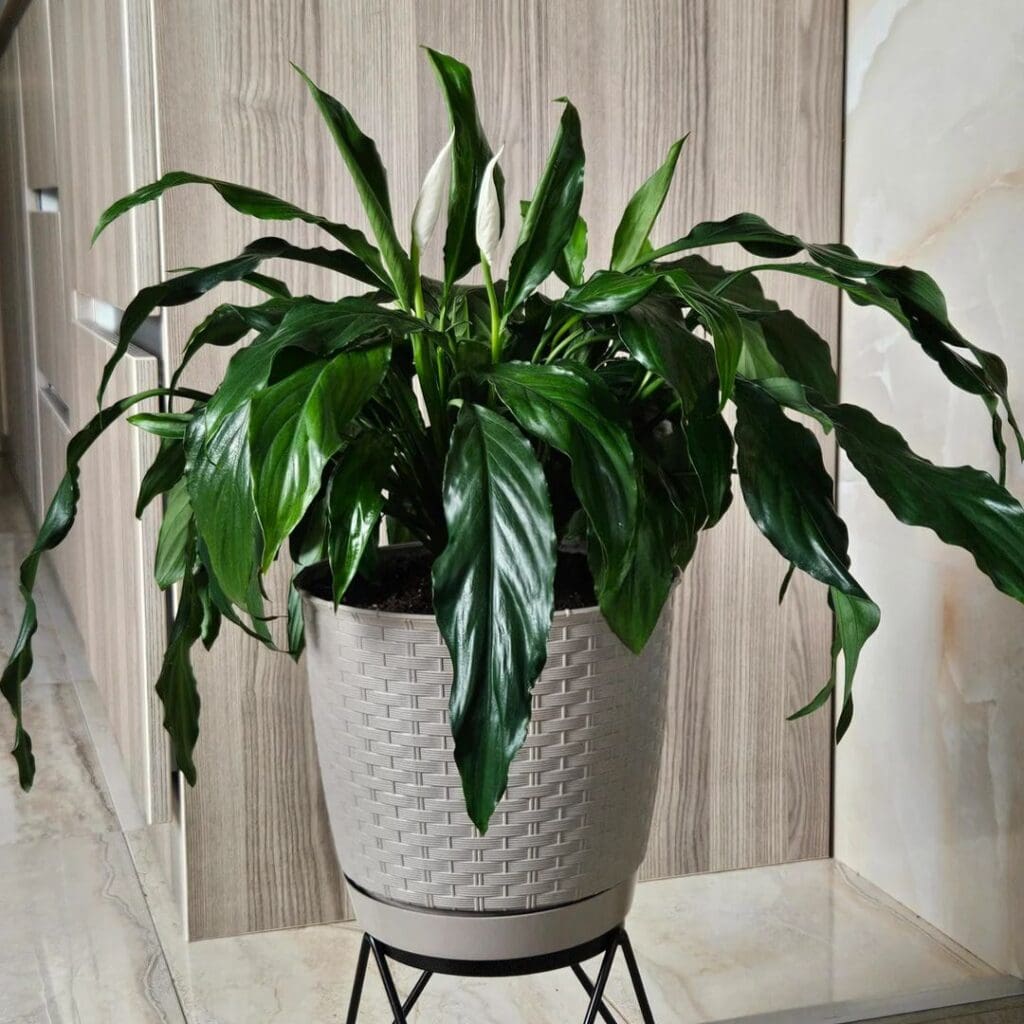
Peace Lilies are easygoing and look elegant indoors. Their dark leaves and crisp white blooms just make a room feel fresh.
I’ve found that used coffee grounds can help Peace Lilies thrive, if I don’t overdo it. Coffee grounds add a bit of nitrogen, which seems to help the leaves stay healthy.
Dry grounds, used in moderation, are the way to go. Too much can tip the soil toward being too acidic or hold too much water. I usually blend a little into the soil or compost first.
Peace Lilies like their soil a bit acidic, so coffee grounds help with that. I see greener leaves and steady growth when I use them lightly.
I keep the soil well-drained and water only when the top layer dries out. That seems to keep root rot at bay.
4) Boston Fern

Boston Ferns seem to love a sprinkle of coffee grounds. They like their soil on the acidic side, and the grounds provide that plus a bit of nitrogen for lush fronds.
I always mix the grounds into the soil, never just leave them sitting on top. That helps keep roots healthy and avoids mold. A small amount is plenty—too much can make the soil heavy.
I add coffee grounds about once a month during the growing season. It keeps the fronds looking bright and full. In between, I make sure the soil stays evenly moist.
Boston Ferns also appreciate humidity, so I’ll mist the leaves or keep a tray of water nearby. With nutrients from coffee grounds and consistent care, they stay healthy and full.
5) Snake Plant

Snake Plants are nearly indestructible, which is probably why I like them. They handle low light, don’t need much water, and pretty much thrive on neglect.
Carefully used coffee grounds can give them a little edge. The grounds add a touch of nitrogen for healthy green leaves. I always dry the grounds first—no one wants mold.
I mix just a bit into the soil or compost, keeping things loose and just slightly acidic. Too much coffee makes the soil heavy or damp, so I go easy.
Using coffee grounds once a month, I notice stronger leaves and steady growth. Good drainage is important, so I always check the pot.
6) Philodendron

Philodendrons do well with a small amount of coffee grounds mixed into their soil. The grounds add a little organic matter, which improves texture and drainage.
I stick to used coffee grounds, since fresh ones are too acidic. Mixing them with compost helps keep everything balanced and gives a slow nutrient release.
With this approach, I see steady, healthy growth and greener leaves. The nitrogen in coffee grounds helps with leaf development, which is key for these tropical plants.
I never pile on too much at once. A handful every few months is enough. Too many grounds can make the soil heavy and damp.
Philodendrons hate sitting in wet soil, so I always check drainage and let things dry a bit before watering again.
7) Calathea

Calathea stands out for its bold leaves and interesting patterns. It likes medium light and high humidity. The roots prefer slightly acidic soil, so coffee grounds can help—but only in small amounts.
I mix a thin layer of used coffee grounds into the topsoil or compost. This adds some nitrogen and helps the soil hold moisture. Too much can make things dense or overly acidic, so I’m careful.
Calathea wants moist but not soggy soil. I water when the top inch is dry, always with room-temperature water. Good drainage is a must for happy roots.
It’s interesting—coffee grounds seem to attract beneficial microbes, which help roots grow stronger. When I’m sparing, the leaves stay upright and colorful.
Direct sun fades the leaves, so I keep mine in softer light. With the right mix of light, moisture, and just a hint of coffee grounds, my Calathea stays lush all year.
8) ZZ Plant
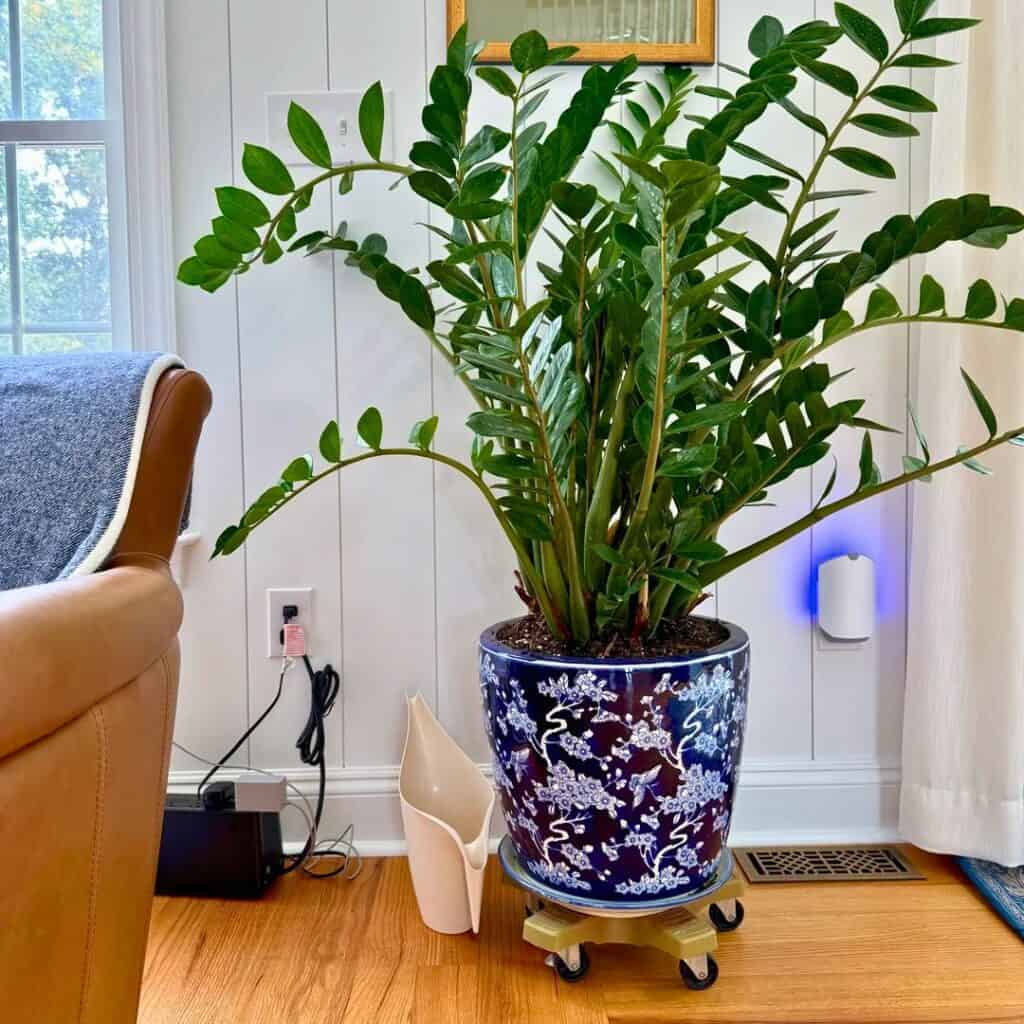
The ZZ Plant is about as easy as houseplants get. It tolerates low light and barely needs watering—basically perfect for anyone who forgets their plants.
Coffee grounds can help it along, as long as I use just a little. They add some nitrogen, which keeps the leaves glossy and green.
I always let the grounds dry and use them sparingly. Too much makes the soil too acidic, which ZZs don’t appreciate. Mixing a small amount into compost first works best for me.
I’ve noticed coffee grounds help the soil hold moisture a bit better, which is handy since ZZ Plants like things lightly moist, not soaked.
9) Pothos
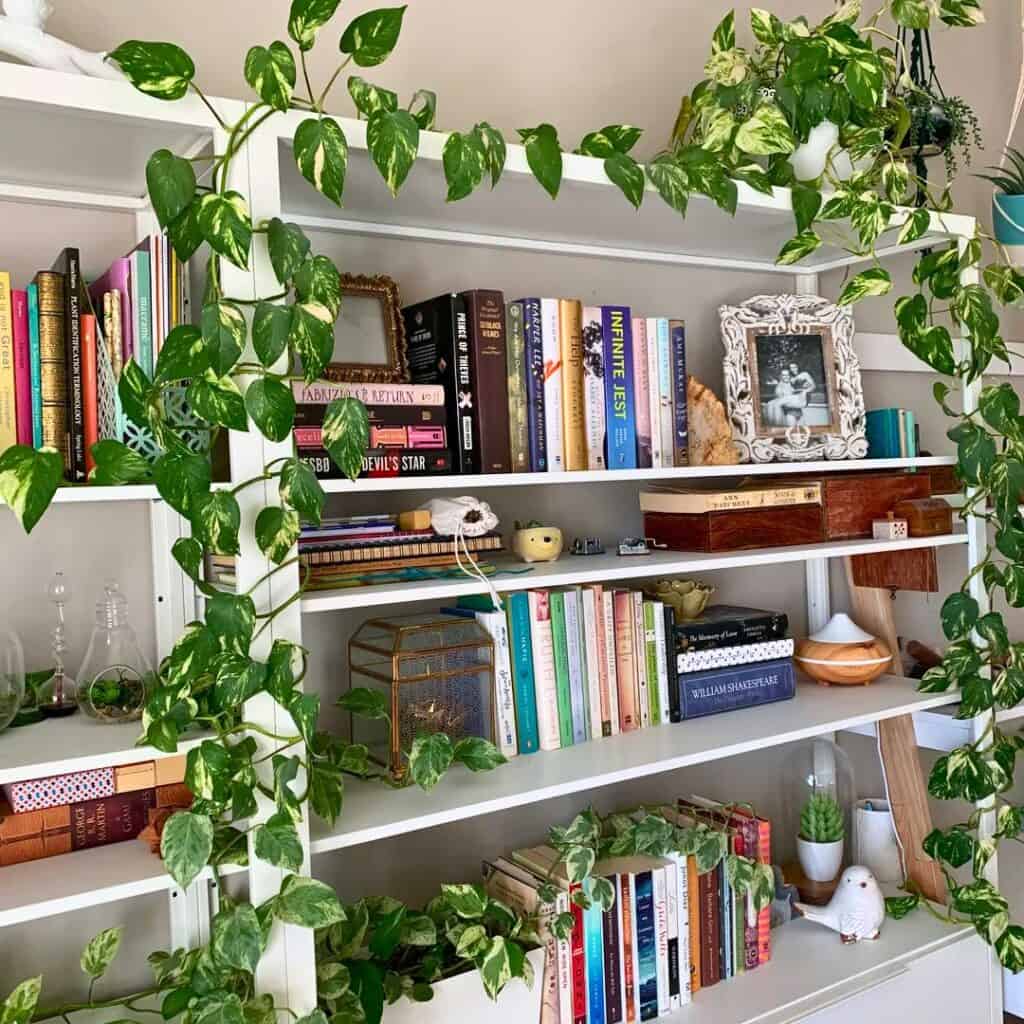
Pothos might be the easiest houseplant ever. It grows in low light, doesn’t need much fussing, and the vines just keep going. Perfect for shelves or hanging baskets.
Small amounts of coffee grounds can give it a boost. The nitrogen supports leafy growth. I mix a little into the soil or compost before watering.
Too much coffee ground makes the soil too acidic, so I use it lightly and always let the grounds dry. A thin layer every few weeks seems to do the trick.
Pothos likes well-draining soil and only wants water when the top inch dries out. Indirect light keeps the leaves bright, whether green or variegated.
Honestly, Pothos is so forgiving. Even if I skip watering, it bounces back. A bit of coffee ground now and then is just an easy way to help it along.
10) English Ivy

English Ivy is easy to grow and adds a classic, green touch to any spot. It climbs, trails, and adapts to most spaces—super flexible as a houseplant.
Coffee grounds add a touch of nitrogen to the soil, which helps keep the leaves looking lush and green.
I use coffee grounds sparingly, mixing them into the soil or compost. Too much and the soil gets too acidic, which English Ivy doesn’t like. A thin layer or a bit in the compost is enough.
This plant likes moist but well-drained soil. I water when the top inch dries out and always make sure there are drainage holes. Coffee grounds can help with moisture, but overwatering is still a risk.
Ivy prefers bright, indirect light. Too much sun burns the leaves; too little slows growth. When it’s healthy, the foliage stays glossy and strong.
Every few weeks, I rinse the leaves to keep them dust-free and help prevent pests.
Used right, coffee grounds are a simple, natural way to give English Ivy a nutrient nudge and keep it growing steadily.
11) Fiddle Leaf Fig
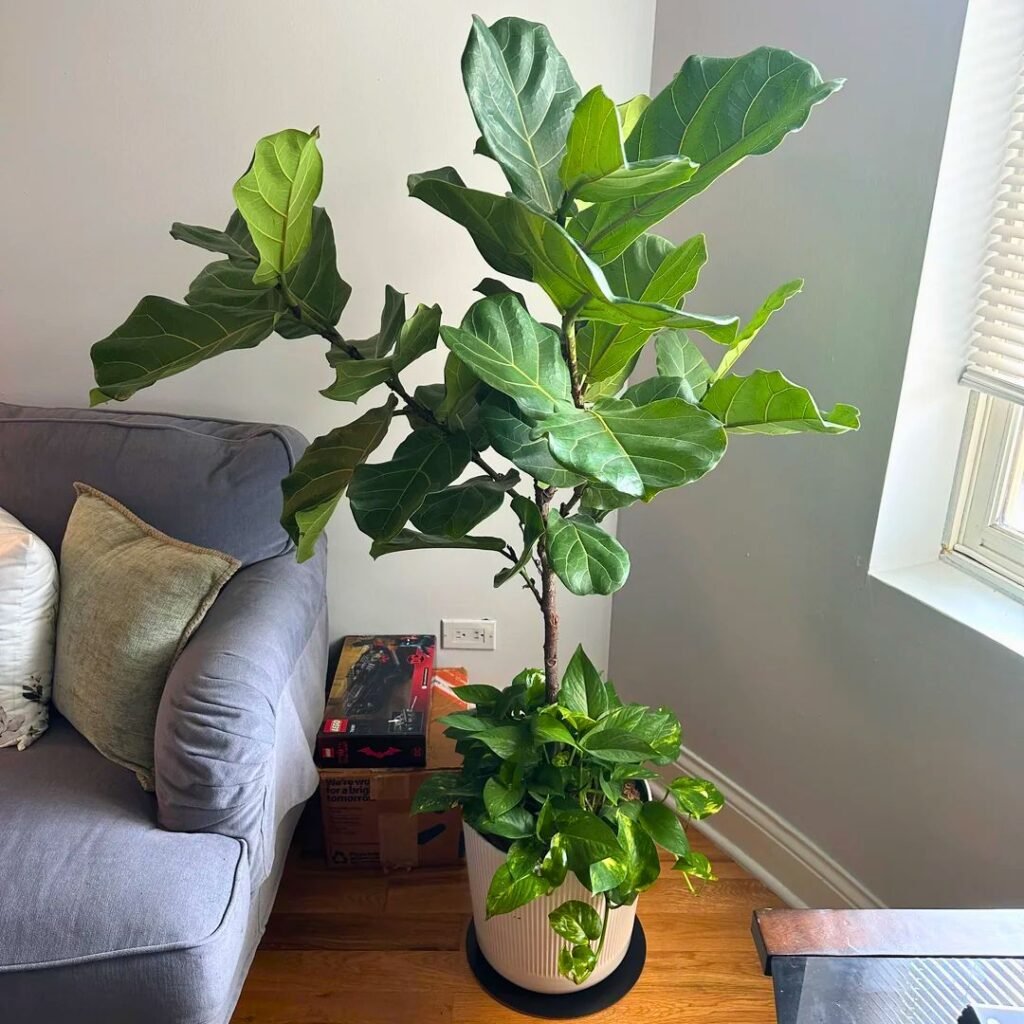
I find the Fiddle Leaf Fig actually perks up with a small handful of coffee grounds mixed into its soil. The grounds add organic matter that makes the dirt feel richer and helps it hold moisture a bit longer.
I go easy on the coffee grounds, though—too much and the soil gets too acidic. This plant likes things just slightly acidic to neutral, so I try not to overdo it.
When I add coffee grounds, I always mix them with compost or some dry soil first. That way, I don’t end up with mold and the roots don’t stay too wet.
The nitrogen from the grounds seems to keep the leaves a nice, deep green. I guess balance is everything for this plant.
I double-check that the pot drains well before adding anything new. Good drainage is one of those little things that keeps roots happy.
Using coffee grounds as a light feeding routine keeps my Fiddle Leaf Fig looking strong and vibrant—no need to get fancy with fertilizers.
12) Rubber Plant
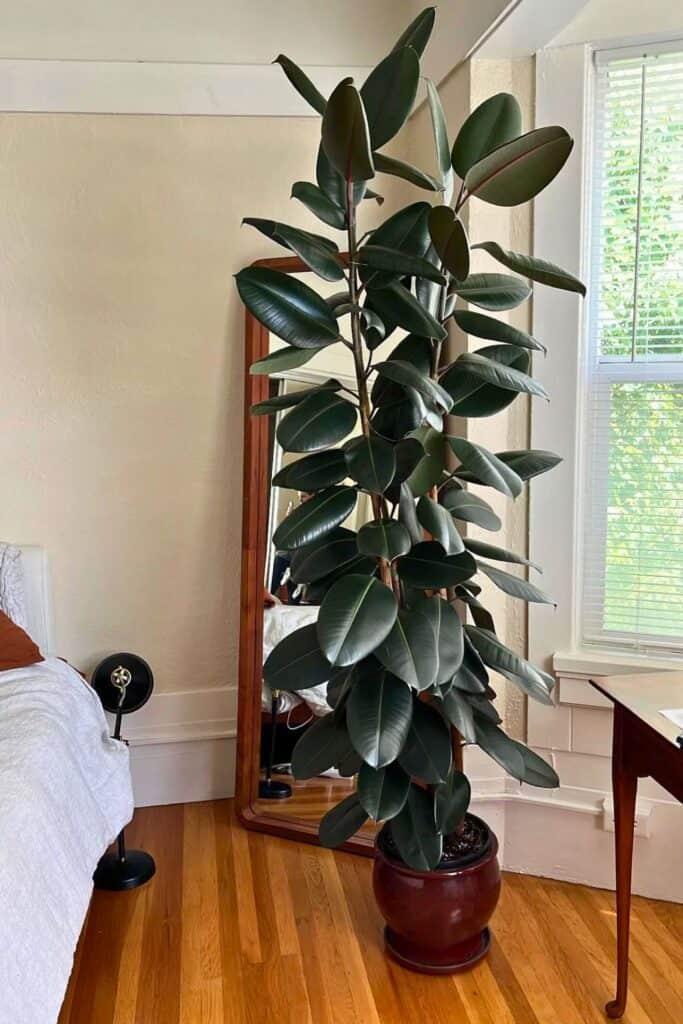
I like how rubber plants grow those big, glossy leaves that just make any room feel fresher. They’re pretty forgiving about light, too, which is a relief.
Sometimes I toss in a bit of coffee grounds for a boost. The nitrogen in the grounds helps the leaves stay green, but I always mix them into the soil or compost first—no one wants moldy soil.
This plant likes slightly acidic soil, so coffee grounds help with that. I make sure the soil drains well since rubber plants really hate wet feet.
I only water when the top inch of soil feels dry. Too much water is a recipe for root rot. As for coffee grounds, I add them maybe once or twice a month, tops.
My rubber plant seems happiest when I combine coffee grounds with other organic stuff, like leaf compost. It keeps things balanced and stops the soil from getting packed down.
With the right mix of light, water, and nutrients, this plant just keeps reaching for the sky. I like keeping mine near a bright window where it can soak up some rays.
13) Dracaena

I’ve noticed Dracaena responds to a pinch of coffee grounds now and then. The nitrogen boost is good for leaf growth, but I’m careful not to go overboard or the soil gets too acidic.
When I use coffee grounds, I mix them into the top layer of soil or just toss them in the compost first. It helps avoid any weird buildup and keeps the roots stress-free.
Dracaenas like slightly acidic to neutral soil, so a light sprinkle every few weeks is plenty. I always make sure the pot drains well—soggy roots are a no-go.
In my experience, the leaves look brighter and greener when the nutrients are right. Coffee grounds help with that if I’m careful.
If I spot yellowing leaves or notice slow growth, I back off on the grounds and flush the soil with water. Keeping things simple seems to work best for Dracaena indoors.
14) Jade Plant

I like adding a bit of coffee grounds to my jade plant because it gives the leaves a little nitrogen boost. They stay green and nice and firm that way.
I only use dry, used coffee grounds. Fresh ones are just too acidic and could mess with the roots.
I’ll mix a small pinch into the top layer of soil or toss it in the compost before using it. That way, I’m not overloading the plant.
The jade plant needs well-draining soil, so I’m careful not to pack the grounds in. I water only when the soil feels dry—no shortcuts there.
With enough light and a little care, the plant grows strong. Just a touch of coffee grounds keeps it looking vibrant.
15) Christmas Cactus
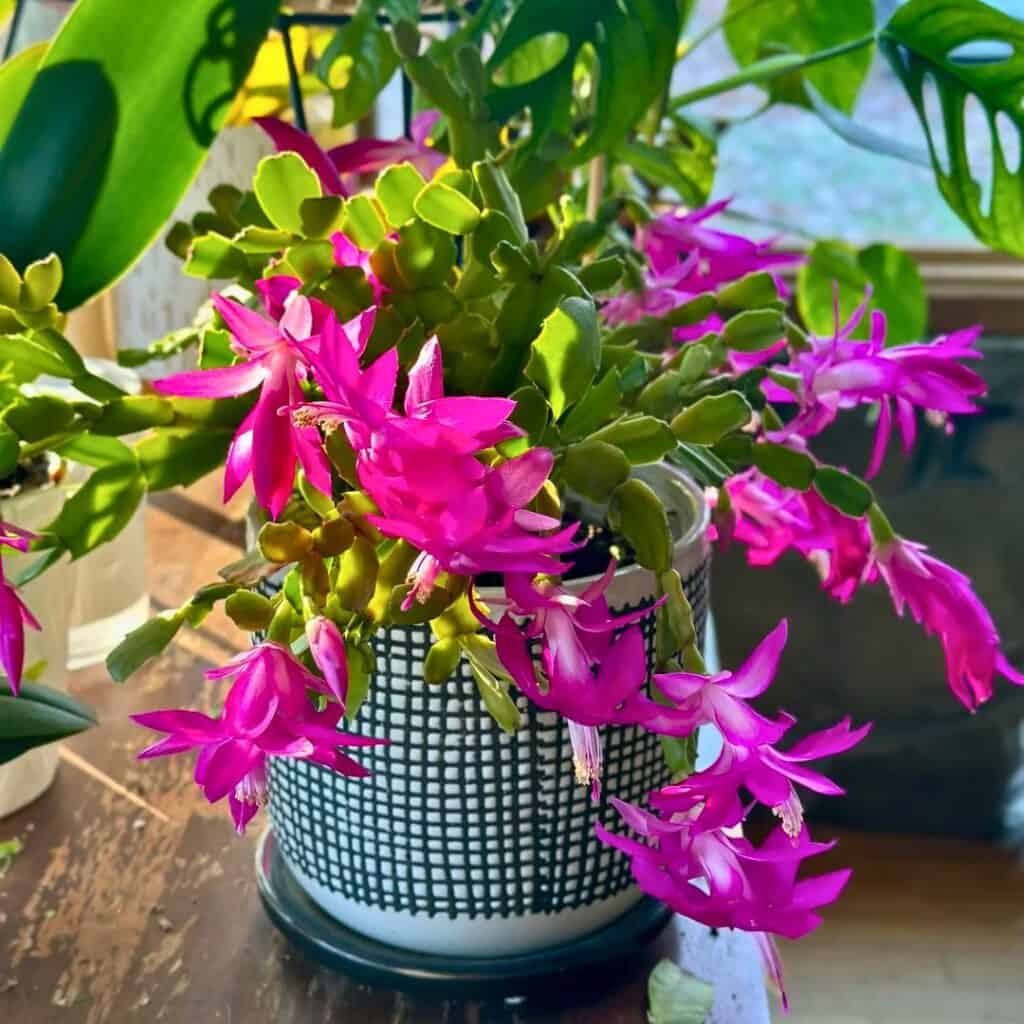
I like growing Christmas Cactus because it’s low-maintenance and those winter blooms are a nice surprise. The bright pink or red flowers really pop when everything else is dull.
Coffee grounds help this plant if you use just a bit. The nitrogen supports healthy green growth, and I always mix the grounds into the soil or compost instead of leaving them on top.
The Christmas Cactus likes slightly acidic soil, so coffee grounds can help keep things balanced. I make sure the soil drains well—too much moisture is a problem for these guys.
I water when the top inch of soil is dry. After adding coffee grounds, I check the soil more often since they can hold a little extra moisture.
Mine sits in bright, indirect light, away from direct sun. With decent light, moderate water, and a coffee boost, it’s always ready to bloom again.
16) Begonia

I like sprinkling a little coffee grounds on my begonias. The gentle nutrients, especially nitrogen, help the leaves grow strong and green.
Begonias like slightly acidic soil, so coffee grounds fit right in. I mix a small amount into the top layer or add it to compost before using it.
I’m careful not to overdo it since too many grounds can hold water and make the soil heavy. Moderation keeps the roots healthy and avoids mold.
When I water regularly and keep the soil loose, my begonias grow steadily and the leaves brighten up. Coffee grounds are just enough to keep them happy.
17) Gardenia

I love growing Gardenias for their white blooms and that strong scent—makes any room feel fresher. They like slightly acidic soil, so coffee grounds come in handy. The grounds lower the pH a bit and add some nitrogen for healthy leaves.
When I use coffee grounds, I mix them lightly into the top layer or add them to compost first. That way, the soil doesn’t get too packed or hold too much water. Moderation is key because too many grounds can mess with airflow around the roots.
Gardenias also need bright, indirect light and steady moisture. I keep the soil damp but not soggy. The right watering and a gentle coffee feeding seem to help with more buds.
Used coffee grounds work best. Fresh grounds are just too acidic and can stress the plant. Recycling what’s left from my morning coffee gives my Gardenia a little boost—no waste.
Adding coffee grounds every few weeks keeps things balanced and the blooms coming. With a little care, Gardenias really respond to this natural fertilizer.
18) Azalea
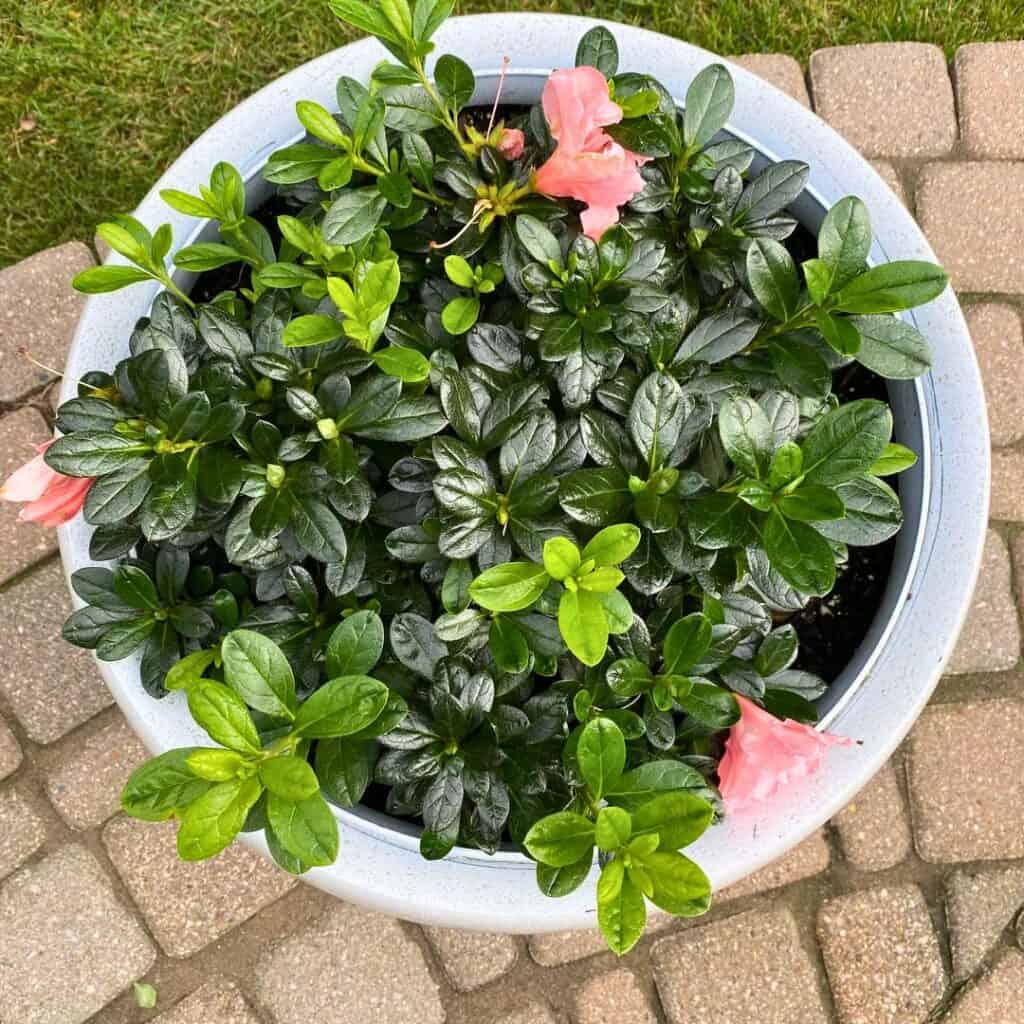
I find Azaleas really thrive in acidic soil, so coffee grounds are a solid choice. The grounds help lower the pH, which is just what these plants want.
When I mix used coffee grounds into the soil, I use small amounts to keep it from getting too dense. I usually sprinkle a thin layer on top and water it in so it blends well.
Azaleas also benefit from the organic matter coffee grounds provide. It makes the soil feel better and the roots seem healthier. I get better growth and more colorful blooms this way.
I always make sure the grounds are dry and cool before adding them. Wet clumps can get moldy and block airflow. Loose soil is key for azaleas.
I stick to using coffee grounds every few weeks during the growing season. Slow and steady wins here.
19) Hydrangea

I like giving my hydrangeas a little coffee grounds to help them grow strong and colorful. These plants do best in slightly acidic soil, and coffee grounds can gently lower the pH over time. That helps roots soak up nutrients more easily.
I mix used coffee grounds into the soil in small amounts. Too much can make things heavy or too acidic. Usually, I sprinkle a thin layer around the base or mix it into compost before adding it to the garden bed.
Hydrangeas change color depending on soil acidity. More acidic soil can turn pink blooms blue, while less acidic keeps them pink. Coffee grounds help if I want a shift toward blue.
Coffee grounds also make the soil feel better—more organic matter means it holds moisture without getting soggy. Hydrangeas like consistently moist soil, but too much water is no good.
I skip fresh grounds because they’re too strong and can block water. Used grounds are milder and break down more easily.
I add coffee grounds once a month during the growing season, mixing them with other compost like leaves or grass clippings. That keeps things balanced.
With just the right amount, hydrangeas respond well to this little boost. The leaves stay green and the blooms look great all season.
20) Rhododendron

I find Rhododendrons do best in acidic soil, so coffee grounds are a nice helper. The natural acidity keeps their roots happy and helps them soak up nutrients.
When I add used coffee grounds, I mix them lightly into the soil—not just on top. That keeps mold away and stops the soil from getting packed down.
The plants seem to like a small amount every few weeks. It improves soil texture and gives a slow release of nitrogen for lush green leaves.
I avoid fresh grounds—they’re just too acidic and tough on the roots. Used grounds are much gentler.
If the soil gets dense, I mix in compost or peat moss. That keeps everything loose and the roots breathing easy.
With a little care, I can keep my Rhododendrons healthy and vibrant—no need for heavy-duty fertilizers.
21) Camellia

I love growing Camellias because they bring color to those shady garden corners. Their glossy leaves and soft blooms really stand out when everything else is winding down.
Camellias like slightly acidic soil, and that’s where coffee grounds help out. I mix used coffee grounds into the soil to bump up the acidity and add a bit of nitrogen for healthy leaves and steady blooms.
I make sure to use coffee grounds in moderation. Too much and the soil gets dense or overly acidic. I usually sprinkle a thin layer around the base and mix it in gently.
These shrubs appreciate consistent moisture. Coffee grounds help the soil hold water a bit longer, but I still check often so it never gets soggy.
Camellias do best in partial shade with some protection from harsh sun. I keep mine near trees or walls that soften the light. With the right care and a bit of coffee, they stay vibrant year after year.
22) Dianthus
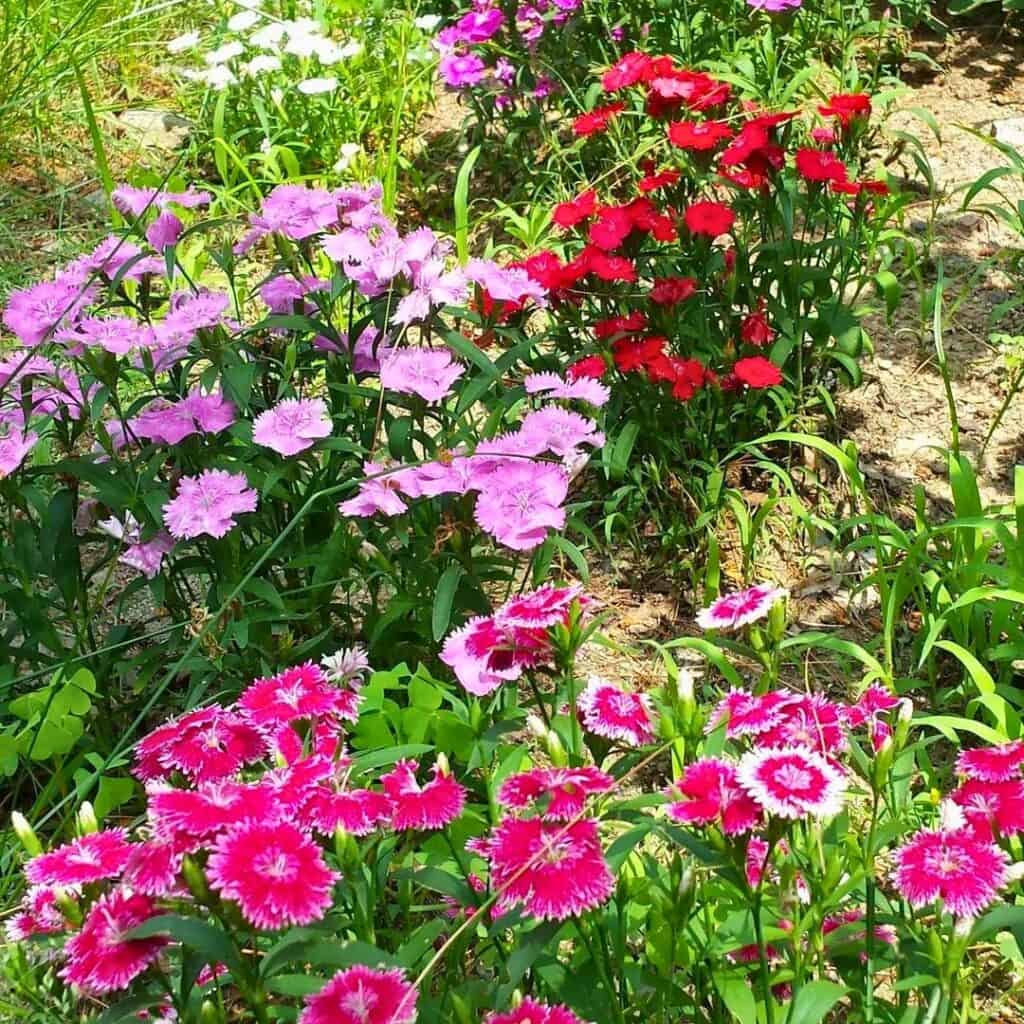
I like growing Dianthus—it’s easy to care for and brings a pop of color to my garden. These flowers, sometimes called pinks or sweet williams, bloom in pink, red, and white shades.
They have this light, spicy scent that just makes the space feel fresh. I’ve noticed coffee grounds help Dianthus grow sturdier, so I use them now and then.
The grounds add nitrogen to the soil, which supports healthy leaves and steady growth. I usually mix a little into the soil or compost, not just sprinkle it on top.
Dianthus likes well-draining soil and a neutral to slightly alkaline pH. Since coffee grounds are a bit acidic, I go easy—too much acidity can slow things down or yellow the leaves.
I water Dianthus only when the top inch of soil feels dry. They love sunny spots and hate soggy soil, so I keep that in mind.
Coffee grounds also make the soil looser and airier, which is a nice bonus. Every few weeks, I’ll give them a light fertilizer, sometimes tossing in compost with a little coffee grounds for a gentle nutrient boost.
With this approach, the blooms stay fresh and the stems stronger. It’s a simple way to reuse kitchen scraps and keep these flowers looking lively.
23) Chrysanthemum

I like growing chrysanthemums—they light up my garden in late summer and fall. Their blooms stick around for ages, showing off in yellow, pink, red, and white.
Small amounts of coffee grounds seem to help these plants, thanks to the extra nitrogen. I mix the grounds into the topsoil or compost, never just dumping them on.
This keeps the soil from getting too acidic. Moderation matters—too much acidity and the roots aren’t happy.
Chrysanthemums like well-draining soil and regular watering, but not soggy feet. Adding compost with a bit of coffee grounds keeps the soil loose and rich.
I’ve also noticed coffee grounds can discourage pests like slugs. A thin sprinkle at the base does the trick, at least most of the time.
24) Marigold

I like growing marigolds—they’re bright, low-fuss, and seem to chase pests away. Those golden-orange blooms just cheer up the place.
Coffee grounds can help marigolds too, if you go easy. The nitrogen boost supports healthy leaves and sturdy stems.
I always mix the grounds into the soil, never just leave them on top. That helps avoid mold and keeps things balanced.
Marigolds like soil that drains well, so I don’t overdo it. When I use coffee grounds, the marigolds look greener and keep blooming longer.
The slight acidity helps them soak up nutrients, but too much is a no-go. I usually combine the grounds with compost for a gentle, natural fertilizer.
Just a small handful every few weeks seems enough. More than that, and the soil can get too acidic, slowing things down.
Honestly, it’s kind of fun to reuse my morning coffee for these tough little flowers. Easy, eco-friendly, and the marigolds seem to appreciate it.
25) Petunia

I like growing petunias because they’re colorful and bloom for ages. These flowers handle coffee grounds well if I’m careful.
The grounds give a little nitrogen boost, which helps with leafy growth. I always make sure the coffee grounds are used and dry before adding them in—fresh ones are just too acidic.
A small amount gets mixed into the topsoil or compost for balance. Petunias prefer slightly acidic to neutral soil, so I keep it light.
Too much coffee grounds can make the soil soggy, which petunias hate. Good drainage is a must before I water again.
Adding coffee grounds also seems to deter slugs and pests a bit—the texture makes a mild barrier. It’s a nice, chemical-free bonus.
Every few weeks, I feed my petunias with coffee grounds, plus regular watering and sunlight. When I get the balance right, the blooms are stronger and the plants stay healthy all season.
26) Impatiens

I like growing Impatiens—they’re perfect for shady corners and come in all sorts of pinks, reds, whites, and purples. They love moist, rich soil and indirect light.
For coffee grounds, I mix them lightly into the soil or compost first. That adds organic matter and keeps the soil texture just right.
The grounds help hold moisture, which Impatiens need. I avoid dumping in too many fresh grounds, since that can make things too acidic or heavy.
A little every few weeks is enough. I notice fuller plants and more vibrant leaves after adding coffee grounds—probably the nitrogen doing its job.
I always water after applying grounds, so nutrients reach the roots and nothing just sits on top. It’s a pretty low-effort way to recycle and keep these flowers happy.
27) Geranium

I like using coffee grounds with my geraniums for a small nitrogen boost. It helps the leaves grow stronger and the blooms brighter.
I stick to used and cooled grounds—fresh is just too acidic. I mix a thin layer into the soil or blend it with compost, never too much at once.
Geraniums like their soil a bit loose and rich, so this works well. Too much moisture is a problem for them, so I keep an eye on drainage.
I’ve noticed they stay greener and bloom more steadily through the season with this routine. Coffee grounds also seem to help a bit with pests—sprinkling some around the base adds a little protection.
For me, moderation is key. I treat coffee grounds like a supplement, not a main fertilizer. Balanced with sun and water, the geraniums do great.
28) Coleus

I like Coleus for its wild, colorful leaves. It’s easy to grow indoors or out and instantly brightens up a room or garden.
Coffee grounds give Coleus a gentle boost of nitrogen for healthy leaf growth. I add just a little—dried and mixed into soil or compost.
It’s easy to go overboard, but too many coffee grounds can make the soil too acidic, which Coleus doesn’t appreciate. Once a month is usually enough for me.
This plant likes moist, well-drained soil and bright, indirect light. I water when the top layer feels dry and pinch off top leaves to keep it bushy.
With a bit of care and some coffee grounds, Coleus stays bold and healthy all season. Not much fuss, just a splash of color.
29) Succulents

I’ve found succulents do fine with a little coffee grounds mixed into their soil. Moderation is the trick here.
These plants want well-draining soil, and too much organic matter can make things soggy. I dry the coffee grounds first and mix them lightly into the topsoil or compost.
It adds a touch of nitrogen for leaf growth, but doesn’t make the soil too rich. I never put fresh grounds directly on the soil—they trap moisture and can cause root rot.
Mixing grounds with sand or perlite keeps the texture loose. Succulents like jade plants, echeveria, and aloe vera seem to thrive with this setup.
I use coffee grounds in small doses—maybe once every few months. That keeps things balanced and avoids pH issues.
It’s a simple way to reuse waste and give the succulents a little nudge. Plus, it’s pretty low-cost and easy.
30) Echeveria
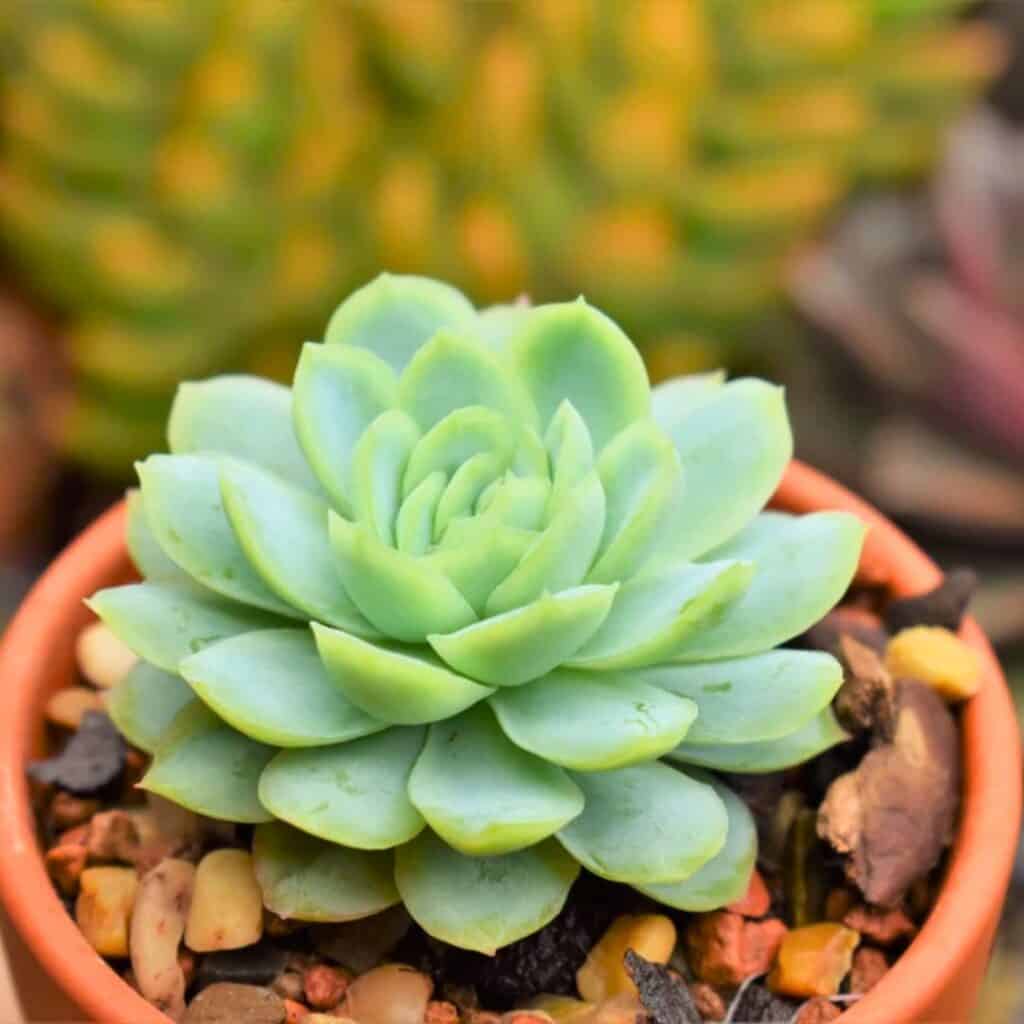
Echeveria does best in well-draining soil and likes to dry out between waterings. These succulents want bright light and warmth, so they’re easy to keep happy indoors or out.
I add coffee grounds in small amounts—just a tiny bit of nitrogen helps the leaves stay firm and colorful. Too much, though, and the soil holds water, which is asking for trouble.
I mix dried coffee grounds into the top layer of potting soil or compost before using. That keeps things balanced and avoids making the soil too acidic.
Echeveria doesn’t need much feeding, so I only refresh the mix a couple times a year. The little boost from coffee grounds is enough.
Good drainage is crucial. Dry roots mean healthy Echeveria, and a bit of airflow helps keep pests and mold away.
31) Sedum

I like Sedum—it’s tough, low-maintenance, and stores water in its thick leaves. Perfect for busy folks or dry spots.
Coffee grounds can help Sedum grow stronger, but only in small amounts. They add a bit of nitrogen for healthy leaves.
I mix the grounds into the soil or compost, never just pile them on top. That helps avoid mold and keeps the soil from getting compacted.
Sedum loves well-draining soil. Too much moisture is a problem, so I keep the mix light and airy.
I use coffee grounds maybe once a month—more than that, and the soil gets too acidic. When I get it right, Sedum’s leaves look greener and growth is steady.
It’s a simple way to recycle coffee waste and give Sedum a gentle nutrient boost. No big fuss, just a little extra care.
32) Crassula Ovata

I often toss some coffee grounds onto my Crassula Ovata—you might know it as the Jade Plant—when I want to give it a little nutrient kick.
This plant seems happiest in well-draining soil, and a sprinkle of coffee grounds (not too much) can help make the soil feel just right.
I usually mix used, dry coffee grounds into the top layer or blend them into compost before adding to the pot.
It’s a small way to add nitrogen and trace minerals, and it doesn’t make the soil too acidic if you’re careful.
Fresh grounds are a no-go—they’re just too much and hold more water than you’d expect.
The Jade Plant stores water in those thick, glossy leaves, so I don’t water often.
I always let the soil dry out fully, especially if I’ve added anything organic like coffee grounds.
Too much moisture is asking for root rot, and nobody wants that.
With a little coffee ground boost every few months, I’ve seen healthier leaf color and steady growth.
Honestly, with succulents, less is better—I’d rather underdo it than overdo it.
33) Haworthia
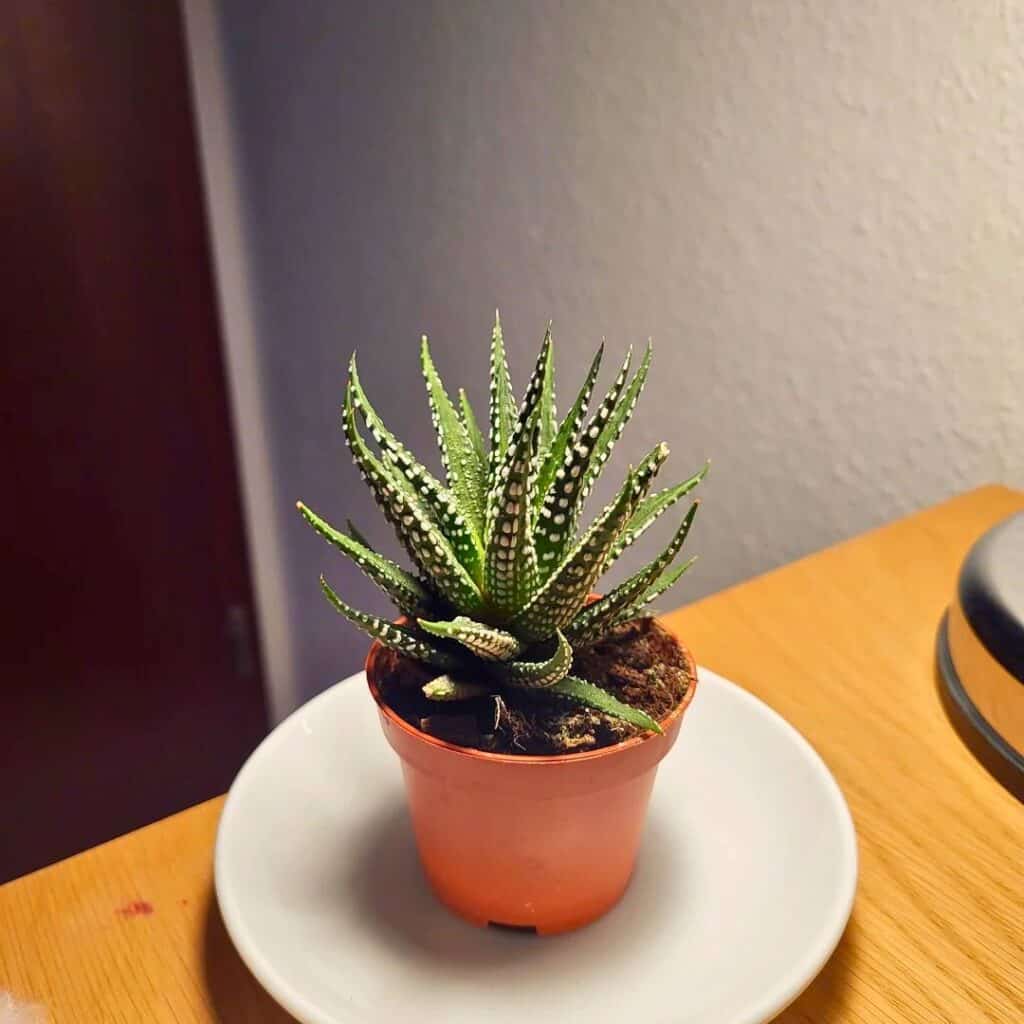
There’s something about Haworthia that just works—it’s low-fuss and gives off a clean, modern vibe.
The pointed, chunky leaves with those white stripes or dots are kind of hypnotic.
It doesn’t get huge, so it’s ideal for a desk or a windowsill that needs a little life.
I’ve noticed a pinch of coffee grounds in the soil makes a difference—just a bit of nitrogen for the leaves.
I always mix the grounds in rather than leaving them on top, since nobody wants mold or soggy soil.
Haworthia likes bright, indirect light and a soil mix that drains fast.
I let the soil dry out before watering again—these guys really hate wet feet.
If I do use coffee grounds, I lighten the mix with sand or perlite so things stay airy.
When the soil has a touch of organic matter, my Haworthia looks greener and feels firmer.
But I really only use coffee grounds every few months—moderation is key for these easy plants.
If you want a small succulent that thrives on simple care, Haworthia is a great choice.
It doesn’t ask for much, and a little recycled coffee waste keeps it looking sharp and a bit more eco-friendly.
34) Kalanchoe

I’m a fan of Kalanchoe—it’s cheerful, easy, and brings a pop of color where you need it.
The thick, green leaves hold water, so I don’t have to hover with the watering can.
Those little blooms stick around for ages, which is always a win for indoor gardeners.
I’ve tossed in coffee grounds now and then, and it seems to help Kalanchoe perk up.
The grounds add a bit of nitrogen, which the leaves seem to appreciate.
I always mix them into the top layer, never just sprinkle them on the surface.
This plant likes well-draining soil and a spot with moderate sunlight.
Too much water is a recipe for root rot, so I let the soil dry out before watering again.
A bright windowsill is usually perfect for it.
With coffee grounds, I make sure they’re dry and used—fresh ones are too acidic and harsh for the roots.
Sometimes I’ll mix them with compost or potting mix to even things out.
Kalanchoe seems to like a small dose of organic matter—the leaves stay plump, and the flowers linger a bit longer.
I’m careful not to overdo it, since too much can make the soil heavy.
Dead leaves or faded flowers go straight to the compost to keep things tidy.
With a bit of attention and a light touch of coffee grounds, Kalanchoe stays healthy and vibrant through the seasons.
35) Sempervivum

I’ve got a soft spot for Sempervivum, or hens and chicks—they’re tough, unfussy, and always look tidy.
The rosettes spread out over time, making a cool cluster whether you grow them inside or out.
A sprinkle of coffee grounds seems to help, but only in small amounts.
It’s mostly about a bit of nitrogen for the leaves, and I always mix the grounds in or add them to compost first.
Sempervivum is all about well-draining soil—too much water is a real problem.
If I add coffee grounds, I make sure the soil stays loose and doesn’t get packed down.
I give these plants bright light and moderate watering.
They’re fine with full sun and can even handle the cold, which is actually kind of impressive.
The rosettes change color a bit with the seasons, which keeps things interesting.
I keep the coffee grounds to a minimum—too much organic matter just traps moisture.
A small handful mixed into the potting mix every few months is all I use.
They work in rock gardens, containers, or sunny windowsills.
They don’t need much fertilizer, so that little coffee boost is plenty.
Honestly, I love how low-maintenance they are but still manage to look so good.
If you want a tough, attractive succulent that’s happy with a touch of coffee ground enrichment, Sempervivum is a solid pick.
Simple, resilient, and rewarding—what more could you want?
36) Aeonium

I keep coming back to Aeoniums—they’re easy, and those rosettes are just cool.
The colors range from green to almost black-purple, and they look great in pots or tucked into rock gardens.
I’ve tried adding coffee grounds to their soil, but only in small amounts.
It adds a bit of organic matter and helps with drainage and texture, especially when mixed with other materials.
Aeoniums like slightly acidic soil, so the coffee grounds help nudge the pH in the right direction.
This makes it easier for the roots to soak up nutrients.
I always make sure the soil drains well—Aeoniums really don’t enjoy wet feet.
Used coffee grounds go in only once every few months.
Too much and you’ll end up with soggy soil and root rot.
A thin layer or just a light mix is all I ever use.
When I get it right, my Aeoniums have firmer rosettes and brighter color.
It’s a simple way to recycle waste and give the plants a tiny nutrient boost.
37) Graptopetalum
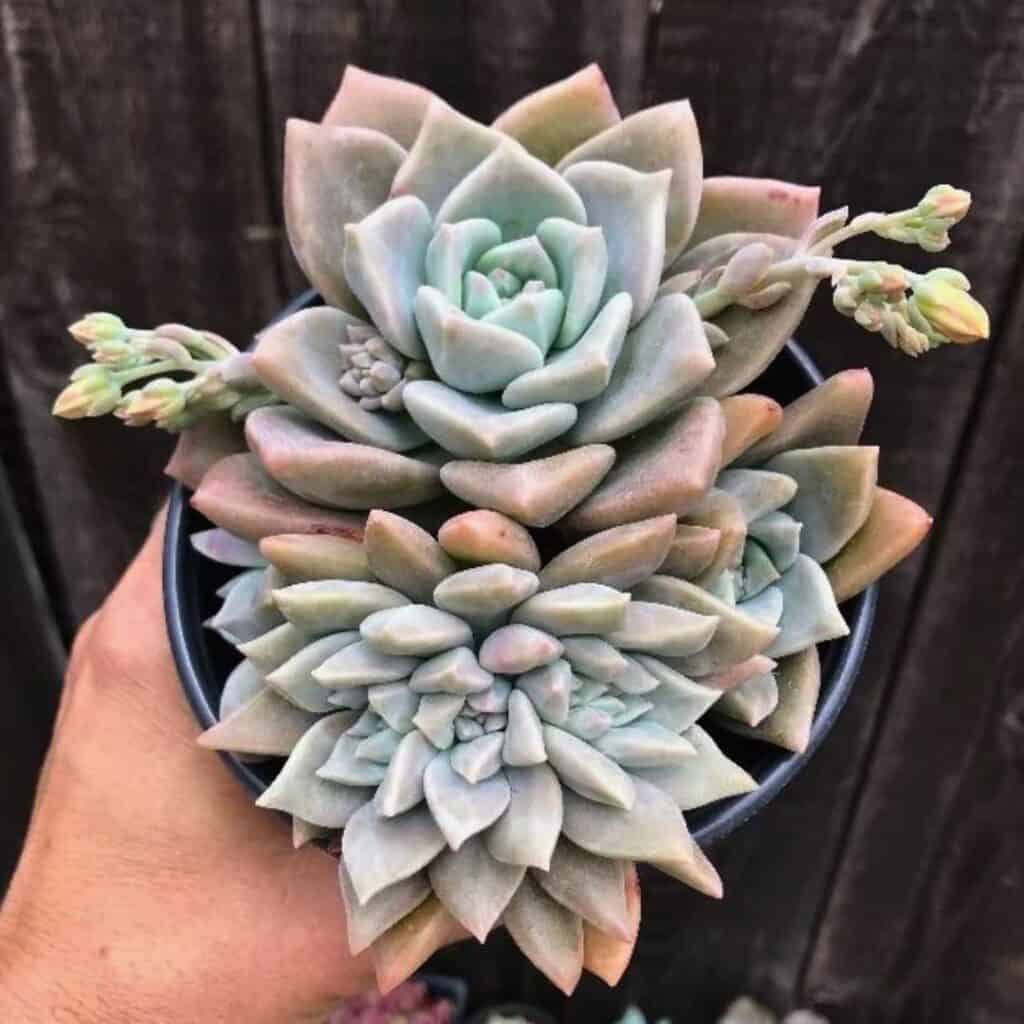
I’ve always liked Graptopetalum—it’s almost impossible to mess up, and the leaves are so plump and star-shaped.
They store water, so you don’t have to fuss over watering, and the colors shift from gray to pink or purple depending on the light.
When I add coffee grounds, I’m careful not to go overboard.
They can help with soil texture and give a little nitrogen boost, but only if they’re dry and used.
I mix a bit into the potting mix or sprinkle a thin layer on top, just enough to keep things balanced.
The soil needs to dry out completely between waterings—root rot is always lurking if you’re careless.
Good drainage is non-negotiable for Graptopetalum.
I use pots with holes and a gritty mix, usually cactus soil plus perlite.
The coffee grounds help keep things loose and airy, which the roots seem to like.
With the right combo of light, water, and a touch of coffee grounds, my Graptopetalum always looks its best.
It’s a no-fuss way to keep this succulent thriving indoors or out on a sunny balcony.
38) Lithops

I get a kick out of growing Lithops—they look like little stones and barely need any care.
These tiny succulents hold water in their fat leaves, so they’re built for dry spells.
Every now and then, I’ll add a pinch of coffee grounds to their sandy soil.
It adds a bit of organic matter and helps with drainage, but I make sure the grounds are dry and used.
Lithops need well-draining soil and plenty of light.
I’ll mix in a small amount of coffee grounds or sometimes just sprinkle a thin layer on top.
Too much holds moisture, and that’s a death sentence for these guys.
I only water when the soil is bone dry.
The coffee grounds seem to help the soil stay loose and let the roots breathe.
With careful use, my Lithops stay firm and colorful.
They don’t need much fertilizer, so this tiny boost is all they really want.
39) Agave
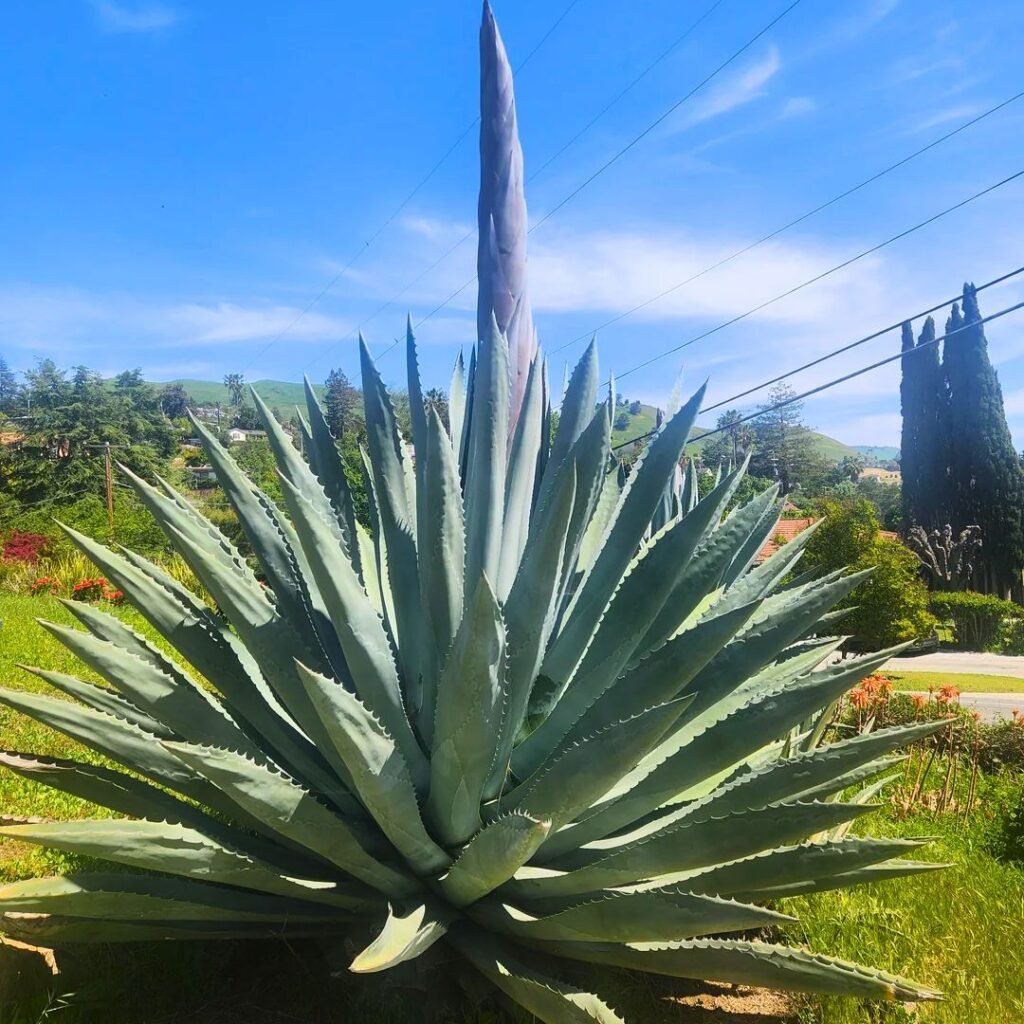
I’ve noticed Agave plants handle coffee grounds well, as long as you don’t get carried away.
They like their soil a bit acidic, and coffee grounds nudge the pH in the right direction.
I mix used coffee grounds into compost before adding it to the soil.
This keeps the texture loose and avoids dumping too much nitrogen in one spot.
Agave roots want quick-draining soil, so I never use coffee grounds on their own.
I always let the soil dry out between waterings, since too much moisture is risky.
A light sprinkle of coffee-enriched compost every few months seems to do the trick.
Honestly, moderation matters most here.
Too many coffee grounds make the soil heavy and soggy, which Agave hates.
A small amount gives healthy growth and strong leaves without tipping the balance.
Agave stays low-maintenance, and a little coffee boost keeps the soil active and the plant happy.
40) Cactus
I’ll use coffee grounds now and then for most of my cactus, but always in tiny amounts.
They add a bit of nitrogen, just enough to keep the soil from getting tired.
Cacti want well-draining soil, so I mix the grounds with sand, perlite, or small gravel.
This keeps things loose and lets water drain away from the roots.
I make sure coffee grounds are dry before mixing them in.
Wet grounds can clump, get moldy, or hold too much moisture—none of which cacti appreciate.
I only add a small pinch every few months.
Too much can make the soil acidic and do more harm than good.
Used carefully, coffee grounds support strong root growth and keep the cactus mix fresh.
It’s a simple trick that keeps my plants firm, green, and healthy.
41) Euphorbia

I’ve found Euphorbia to be one of the most adaptable plants I own.
There are all kinds—some are tiny succulents, others get tall and woody—but most want well-draining soil and bright, indirect light.
I use coffee grounds sparingly with Euphorbia, just enough to add a touch of nitrogen for healthy growth.
I always mix the grounds into the soil or compost first—no clumps or mold, thanks.
Euphorbia prefers slightly acidic to neutral soil, so the mild acidity from coffee grounds can be helpful.
I make sure the soil stays loose and drains well, since these plants really dislike sitting in water.
A thin layer of coffee grounds once a month keeps the color strong and helps the soil hold nutrients a bit longer.
I don’t overdo it, though—too much organic matter and you’ll trap moisture.
Euphorbia’s thick, fleshy stems store water, so I only water when the soil feels dry.
The coffee grounds don’t change that routine—it’s just a little nutrient bonus.
I’m always careful with this plant since the milky sap can irritate the skin.
Gloves go on before I repot or prune, just to be safe.
From what I’ve seen, a good mix of sunlight, drainage, and the occasional coffee ground keeps Euphorbia thriving inside or out.
42) Portulaca

I like growing Portulaca because it thrives in sunny spots and poor soil. This hardy plant, also called moss rose, produces bright blooms that open in full sunlight.
Its low, spreading growth makes it perfect for borders, pots, or hanging baskets. When I add coffee grounds to the soil, I do it in small amounts.
The grounds improve the soil’s texture and add a little nitrogen, which helps the plant grow healthy leaves. I always mix the grounds well into the soil to prevent clumping or mold.
Portulaca prefers slightly acidic to neutral soil, so used coffee grounds can support that balance. I avoid using fresh grounds because they can be too acidic and may slow growth.
This plant doesn’t need rich soil or frequent watering. It stores water in its leaves, making it a good choice for dry or hot areas.
I find that light, well-drained soil with a touch of organic matter works best. I often use coffee grounds as part of my compost mix.
When I spread compost around my Portulaca, it releases nutrients slowly and keeps the soil loose. This helps the roots spread easily.
Bright sunlight and moderate feeding keep the blooms vibrant. I use coffee grounds only once in a while, about once a month during the growing season.
Too much can make the soil heavy or overly acidic. With a little care, Portulaca rewards me with colorful flowers that last all summer.
It’s one of the easiest plants to maintain, and a small boost from coffee grounds helps it stay strong and full of life.
43) Zinnia
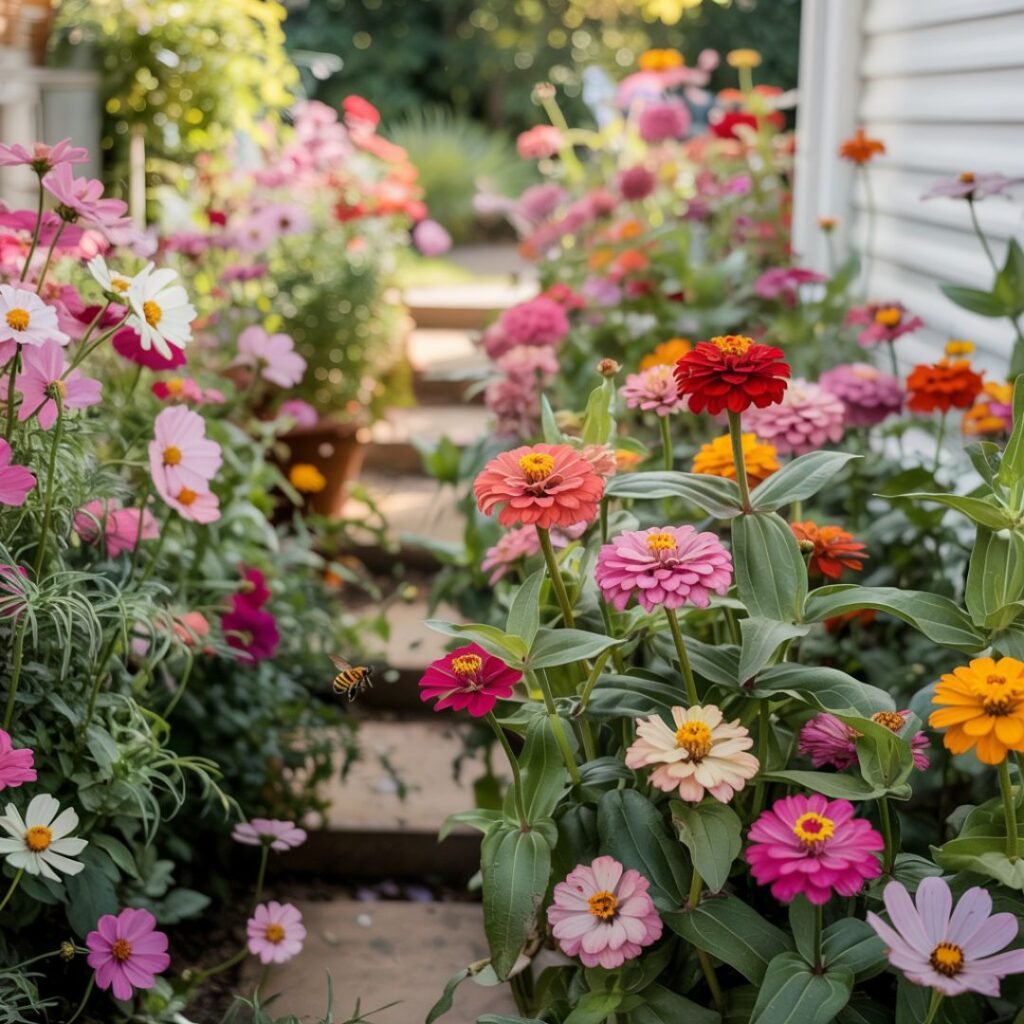
I like growing Zinnias because they add bright color and attract butterflies. These flowers do well in warm weather and full sun.
They’re easy to grow from seed and bloom quickly. I’ve found that coffee grounds can help Zinnias by adding small amounts of nitrogen to the soil.
I mix used grounds into compost or sprinkle a thin layer around the base of the plants. This keeps the soil loose and improves drainage.
Too much coffee ground can make the soil too acidic, so I use it sparingly. I also make sure to water well after applying it.
Zinnias grow best in well-drained, slightly acidic to neutral soil. When I combine coffee grounds with compost, the mix supports strong stems and healthy leaves.
It also encourages steady blooming through the season. I love how Zinnias respond to a little extra care.
With the right balance of sunlight, water, and nutrients, they reward me with bright, lasting flowers.
44) Snapdragon
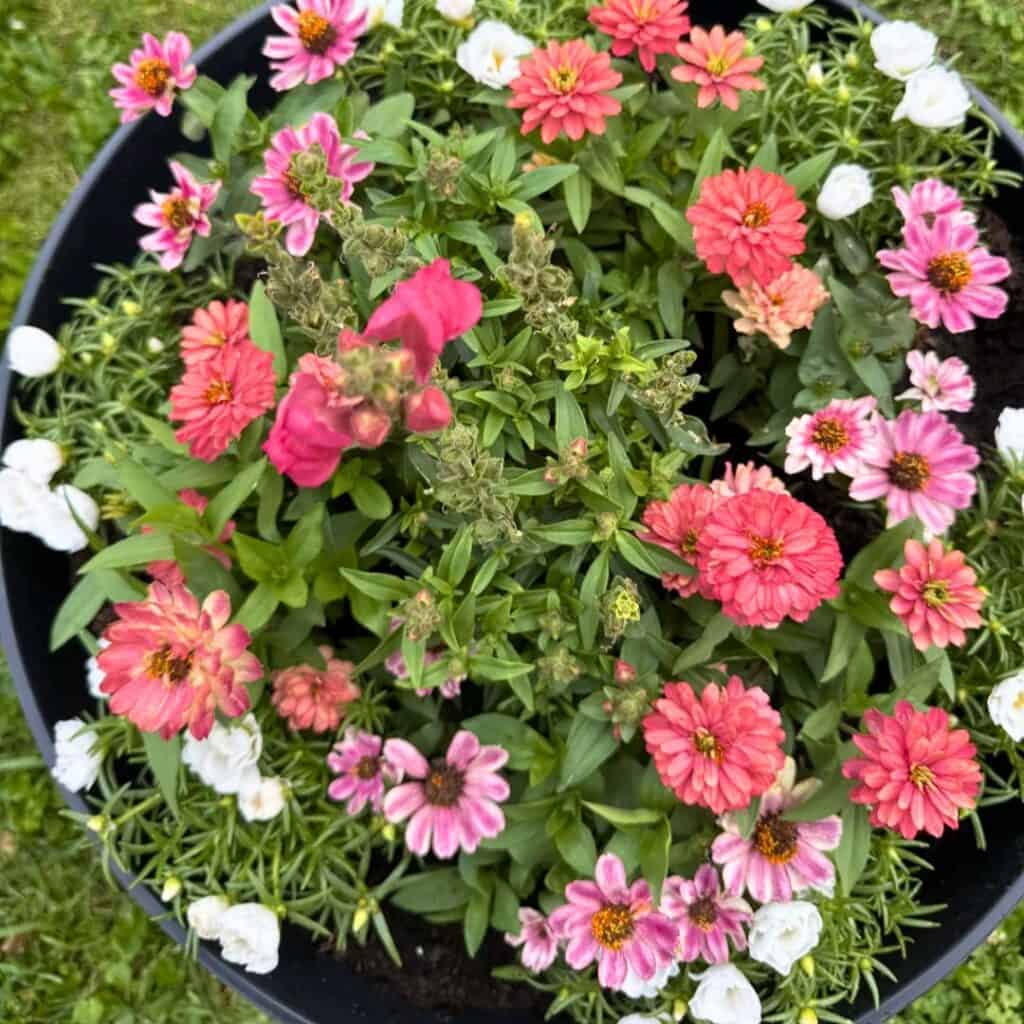
I like growing snapdragons because they add bright color and charm to my garden. These flowers come in many shades, from pink and yellow to deep red.
They bloom best in cool weather and bring bees and butterflies to my yard. I’ve found that coffee grounds help snapdragons grow stronger.
The grounds add nitrogen, which supports leafy growth and healthy stems. I mix a small amount into the soil or compost rather than placing it directly on the roots.
Snapdragons prefer well-draining soil and regular watering. I keep the soil slightly moist but never soggy.
Too much water can cause root problems, so I always check the top layer before watering again. When I use coffee grounds, I combine them with other organic matter like leaves or compost.
This helps balance the soil’s nutrients. The slightly acidic nature of coffee grounds suits snapdragons well, especially if my soil is too alkaline.
I prune old blooms to encourage new flowers. With a little care and the right soil mix, my snapdragons stay healthy and colorful for months.
Coffee grounds give them a gentle nutrient boost that keeps their blooms vibrant and steady.
45) Lobelia

I like growing Lobelia because it brings bright blue or purple color to my garden and containers. These small flowers bloom for a long time and attract bees and butterflies.
I’ve found that coffee grounds can help Lobelia grow better when used in small amounts. The grounds add nitrogen to the soil, which supports healthy leaf growth.
I always mix them into the soil instead of leaving them on top. Lobelia prefers moist, well-drained soil and partial sun.
I keep the soil damp but not soggy. When I add coffee grounds, I make sure they are dry and used, not fresh, since fresh grounds can be too acidic.
I notice that Lobelia responds well to a slightly acidic environment, which coffee grounds can help create. This condition keeps the plant’s color bright and its growth steady.
I usually feed my Lobelia every few weeks with a balanced fertilizer and add a small handful of coffee grounds once a month. This simple step keeps the plant healthy and blooming through the season.
46) Sweet Pea

I find that Sweet Pea plants respond well to a small amount of coffee grounds in their soil. The added nitrogen helps them grow stronger stems and produce more blooms.
I always make sure the grounds are used and dry before mixing them in. These flowers prefer slightly acidic soil, and coffee grounds can help maintain that balance.
I mix the grounds with compost or garden soil to prevent clumping and improve drainage. This keeps the roots healthy and reduces the risk of mold.
When I feed my Sweet Peas, I use coffee grounds only once every few weeks. Too much can make the soil too acidic or compact.
A light sprinkle around the base works best. I also notice that the grounds attract earthworms, which help aerate the soil.
This improves nutrient flow and keeps the plants thriving. I avoid placing fresh grounds directly on the stems or leaves to prevent moisture buildup.
With regular watering and sunlight, Sweet Peas reward me with colorful, fragrant blossoms through the growing season.
47) Nasturtium
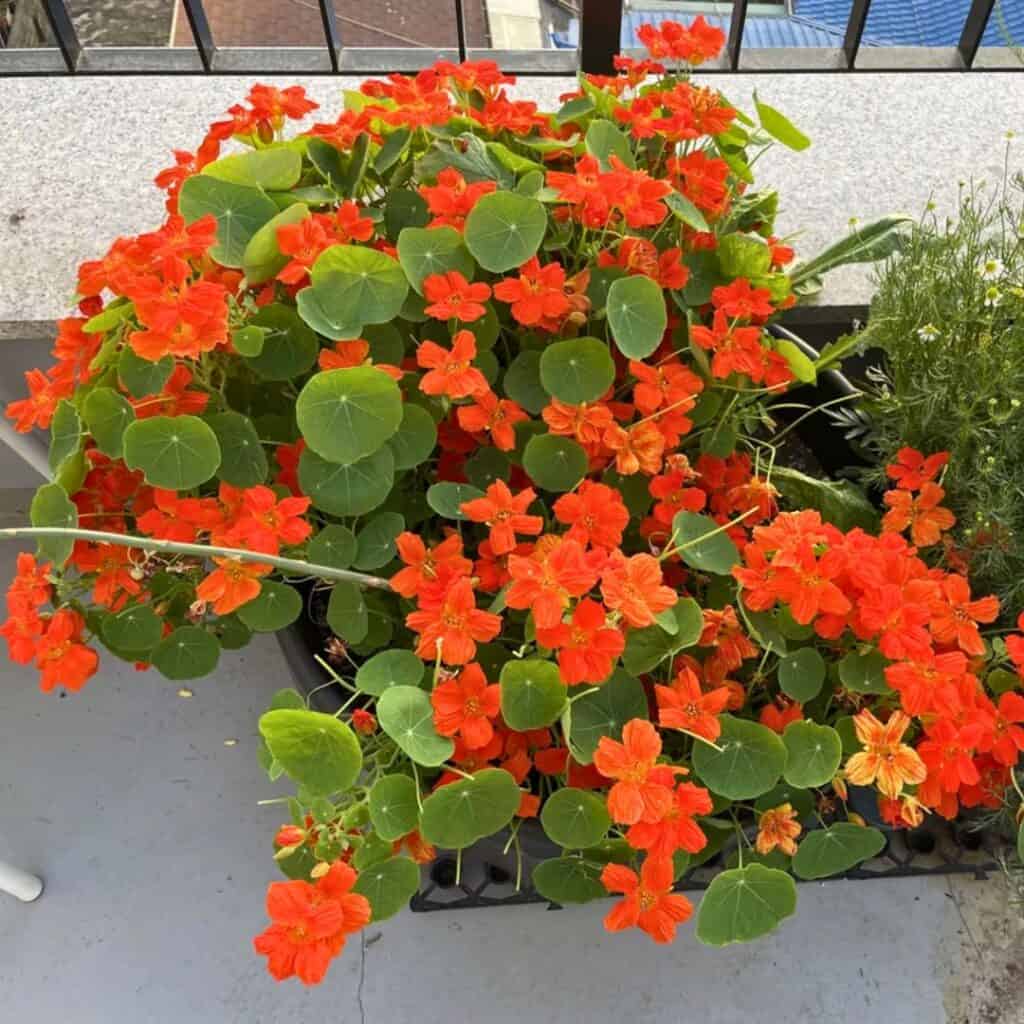
I like growing nasturtiums because they are easy to care for and bring bright color to my garden. Their round leaves and bold flowers make them stand out in pots or garden beds.
I’ve found that used coffee grounds can help these plants grow strong. The grounds add small amounts of nitrogen, which supports healthy leaf growth.
I always mix the grounds into the soil instead of placing them on top to prevent mold. Nasturtiums prefer well-draining soil and don’t need heavy feeding.
A light mix of coffee grounds every few weeks works well. Too much can make the soil too acidic, so I use them sparingly.
These plants also attract beneficial insects like bees and repel some pests such as aphids. I enjoy how they improve both the look and health of my garden.
When I water nasturtiums, I keep the soil slightly moist but never soggy. They grow best in full sun and bloom more when they get enough light.
With the right care, they stay lush and colorful for months.
48) Calendula

I like growing Calendula because it’s easy to care for and brightens up any space with its orange and yellow blooms. This plant grows well in pots or garden beds and enjoys moderate sunlight.
I’ve found that coffee grounds can help Calendula grow stronger. They add a small boost of nitrogen to the soil, which supports healthy leaf growth.
I mix used grounds lightly into the top layer of soil or add them to compost before using. Calendula prefers well-draining soil, so I make sure not to add too many grounds at once.
Too much can make the soil dense and hold too much moisture. A small handful every few weeks works best for me.
I also notice that coffee grounds can help repel pests like slugs. When I sprinkle a thin layer around the base of my plants, I see fewer pests chewing on the leaves.
Using coffee grounds is an easy way to reuse waste while giving Calendula a gentle nutrient boost. I keep the balance simple—just enough to enrich the soil without overdoing it.
49) Verbena
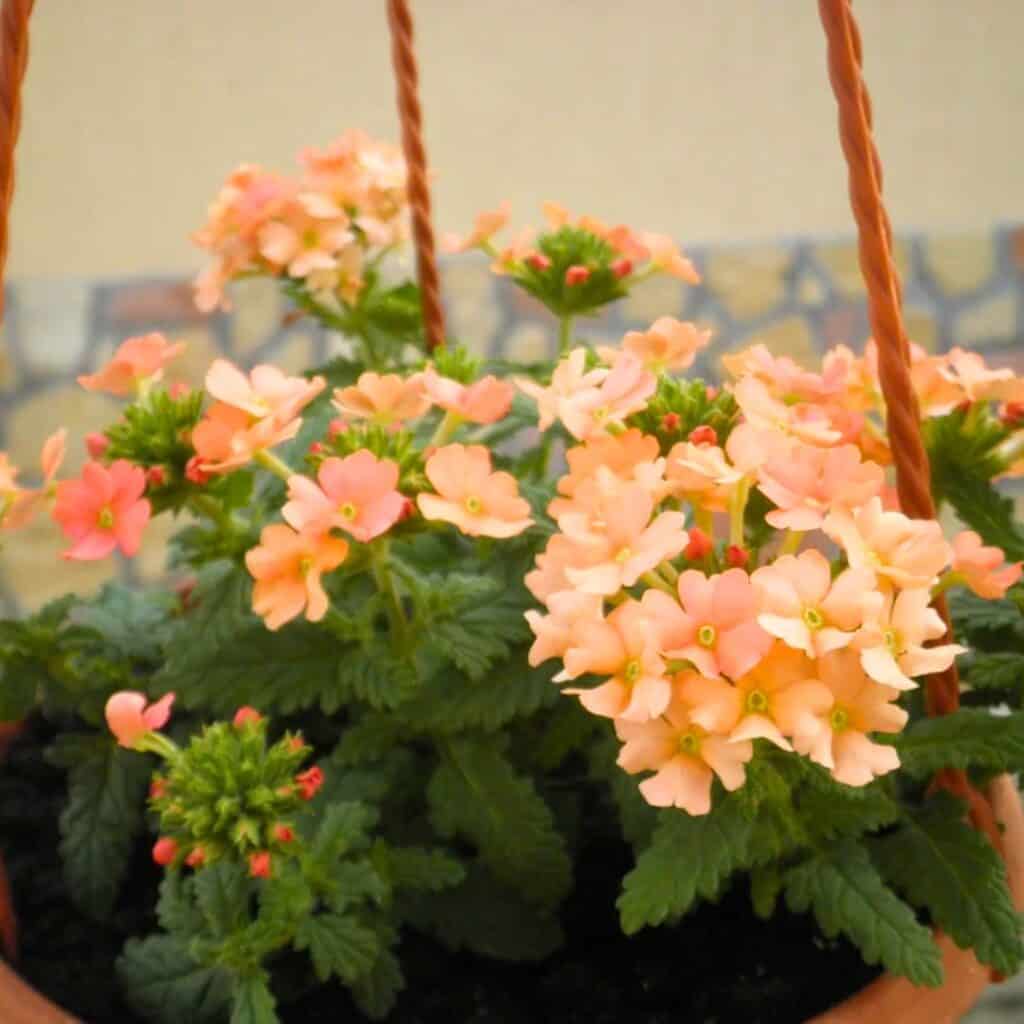
I like growing Verbena because it adds bright color and a steady bloom to my garden. This plant does well in full sun and warm weather.
It grows fast and stays neat with regular trimming. I’ve found that coffee grounds help Verbena by adding a small boost of nitrogen to the soil.
I mix the grounds into compost or sprinkle a thin layer around the base. This keeps the soil rich without making it too acidic.
Verbena prefers well-draining soil, so I make sure the coffee grounds don’t clump or hold too much moisture. I water only when the top of the soil feels dry.
Too much water can cause root rot. When I use coffee grounds in small amounts, my Verbena produces stronger stems and brighter blooms.
I avoid piling the grounds near the plant’s crown to prevent mold. This plant attracts bees and butterflies, which helps pollinate other flowers nearby.
I enjoy seeing the garden come alive with color and movement as Verbena thrives with a little coffee boost.
50) Salvia
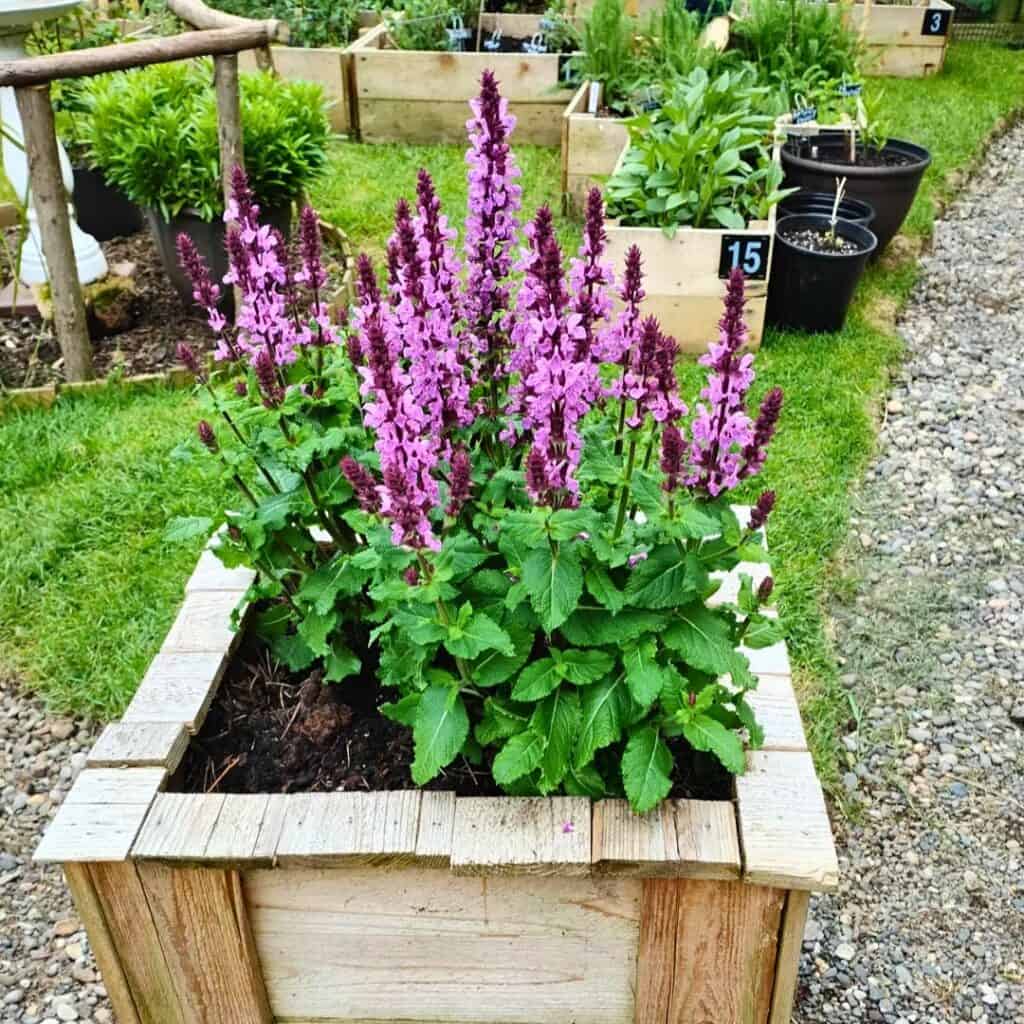
I find that Salvia grows well when I mix a small amount of coffee grounds into the soil. The grounds add nitrogen, which supports strong leaf growth and vibrant color.
I always make sure the soil drains well. Too much moisture can cause root problems, so I mix the grounds with compost or dry soil before adding them.
Salvia prefers slightly acidic soil, and coffee grounds help maintain that balance. I notice the plants respond with fuller foliage and more consistent blooming.
When I feed Salvia this way, I use only a thin layer of grounds every few weeks. This keeps nutrients steady without overwhelming the roots.
I also watch for signs of overuse, like mold or compacted soil. If that happens, I loosen the soil and skip the next feeding.
With careful use, coffee grounds help my Salvia stay healthy, green, and full of life through the growing season.
Benefits of Using Coffee Grounds for Plants
I use coffee grounds in my garden because they add nutrients, improve soil texture, and help beneficial organisms grow. These small changes make plants healthier and soil easier to manage.
Nutrient Content and Soil Enrichment
Coffee grounds contain nitrogen, potassium, phosphorus, calcium, and magnesium. These nutrients support leaf growth, strong roots, and flower production.
I find that mixing used grounds into the soil gives plants a steady, mild nutrient boost without the risk of over-fertilizing. Used coffee grounds are slightly acidic, which helps acid-loving plants like azaleas, hydrangeas, and blueberries.
I usually sprinkle a thin layer around these plants or mix it into compost to balance pH levels naturally.
When I add coffee grounds to compost, they act as a green material, providing nitrogen that balances carbon-rich materials like dried leaves or paper. This balance helps compost break down faster and creates richer soil.
Improving Soil Structure
I’ve noticed that mixing coffee grounds into heavy or compacted soil really improves its texture and drainage. The grounds help loosen up clay soils, letting air and water reach plant roots more easily.
In sandy soils, coffee grounds add organic matter. That bit of extra organic stuff helps the soil hold moisture longer, which keeps plants happier between waterings.
Sometimes I’ll use coffee grounds as a light mulch. A thin layer on top helps retain moisture and can reduce weed growth.
I’m careful not to pile it on too thick, since dense layers can block airflow. Used right, coffee grounds just make soil easier to work with and more supportive for plant growth.
Encouraging Microbial Activity
Healthy soil really depends on microbes, and coffee grounds are like food for these tiny organisms. When I mix grounds into soil or compost, bacteria and fungi break them down and release nutrients for plants.
These microbes also help form humus, that dark, crumbly stuff that’s packed with nutrients. I tend to spot more earthworms in areas where I’ve added coffee grounds—always a good sign the soil’s lively.
Best Practices for Applying Coffee Grounds
I try to use coffee grounds carefully. They’re great for improving soil texture and adding nutrients, but how you apply them matters—too much, or the wrong way, can actually harm plants.
Composting Coffee Grounds
I always mix coffee grounds with other materials before tossing them in my compost. On their own, grounds can get compacted and block airflow.
Usually, I combine them with dry leaves, straw, or shredded paper, aiming for about a 1:3 ratio of coffee grounds to other stuff. That keeps the compost light and helps avoid odors.
I’ll turn the pile every few weeks to keep things breaking down. Coffee grounds add nitrogen, and the dry materials balance it out with carbon.
Once the compost turns dark and crumbly, I use it for potting soil or garden beds. It’s a nice way to cut down on waste and keep my plants fed.
Direct Application Techniques
If I’m applying coffee grounds directly, I stick to thin layers to avoid clumping. I’ll sprinkle about ½ inch or less on top, then mix it lightly into the soil.
Mixing coffee grounds with other organic matter like compost or mulch works best for me. It keeps the soil from getting too dense and helps nutrients release more slowly.
I water after applying, just to help the grounds settle in. For houseplants, I use maybe a teaspoon or two per pot a month—not much. Outdoor plants can handle a bit more, but I never pile grounds around their stems or roots.
Potential Risks and How to Avoid Them
I’m pretty cautious because too many coffee grounds can cause problems. Excessive amounts can hold too much moisture, which sometimes leads to mold or root rot.
Coffee grounds are a bit acidic, so they can affect plants that like neutral soil. To play it safe, I test soil pH before adding a lot.
I make sure the soil drains well and never use grounds as the only mulch. Mixing them with leaves or bark helps balance things out.
Also, I steer clear of grounds from flavored coffees—those additives can be risky. Sticking to these habits keeps my plants healthy.
Frequently Asked Questions
I use coffee grounds to give soil a nutrient boost and help my plants thrive. They add nitrogen and can help some plants grow stronger, though honestly, not every plant loves them.
Which houseplants benefit the most from the addition of coffee grounds to their soil?
I’ve found that African Violets, Spider Plants, and Peace Lilies respond well to a little coffee grounds. These ones like slightly acidic soil and seem to appreciate the extra nutrients.
How can coffee grounds improve the growth and health of flowering plants?
Coffee grounds add organic matter, which helps soil texture and water retention. They also provide slow-release nitrogen, which is handy for steady leaf and flower growth.
Are there any succulents that respond well to coffee grounds as a soil amendment?
Most succulents like dry, well-draining soil, so I use coffee grounds sparingly. Mixing a little with coarse sand can give Aloe Vera or Jade Plants a mild nutrient boost, as long as it doesn’t hold too much moisture.
What is the recommended method for applying coffee grounds to potted plants?
I dry the grounds first, then work a thin layer into the topsoil or blend them with compost. This keeps mold away and prevents the soil from getting compacted.
Can coffee grounds be used with all types of flowers, or are there exceptions?
Definitely not all flowers like acidic soil. I skip coffee grounds for lavender, geraniums, and other plants that want neutral or alkaline conditions. Acid-loving flowers like azaleas and roses usually benefit, though.
What are the potential risks or downsides of using coffee grounds for plant care?
Using too many coffee grounds can block airflow and retain excess moisture. That might lead to root rot before you even realize it.
They can also make soil too acidic if applied too often. Personally, I try to use them in moderation and always mix them well into the soil—just seems safer that way.
Recommended Garden Supplies
| Product Image | Our Recommended Gardening Supplies | Check Offers! |
|---|---|---|
Top Top
Top
Top
Top
Top
Top
Top
Top | rePotme Houseplant and Tropical Classic Potting Soil Mix | Check Offer On Amazon |
 Top
Top
Top
Top
Top
Top
Top
Top | Espoma Organic Indoor Plant Food | Check Offer On Amazon |
 Top
Top
Top
Top
Top
Top
Top
Top | GooingTop LED Grow Light 6000K Full Spectrum Clip Plant Growing Lamp | Check Offer On Amazon |
 Top
Top
Top
Top
Top
Top
Top
Top | Soil Moisture Meter | Check Offer On Amazon |
 Top
Top
Top
Top
Top
Top
Top
Top | Govee Hygrometer Thermometer, Bluetooth Enabled! | Check Offer On Amazon |
 Top
Top | LEVOIT Humidifiers for Large Room(Best For Plants) | Check Offer On Amazon |
 Top
Top
Top
Top
Top
Top
Top
Top | Upgraded DIY Automatic Drip Irrigation Kit, 15 Potted Houseplants Support | Check Offer On Amazon |
 Top
Top
Top
Top
Top
Top
Top
Top | Stainless Steel Heavy Duty Gardening Tool Set | Check Offer On Amazon |
 Top
Top
Top
Top
Top
Top
Top
Top | Bonide Insecticidal Soap | Check Offer On Amazon |
 Top
Top
Top
Top
Top
Top
Top
Top | Bonide 32 oz Spray Neem Oil for Organic Gardening | Check Offer On Amazon |
 Top
Top
Top
Top
Top
Top
Top
Top | Garden Safe Fungicide | Check Offer On Amazon |
Note: Some images in the articles are sourced from Reddit and Other Platforms For Reference Purpose.

